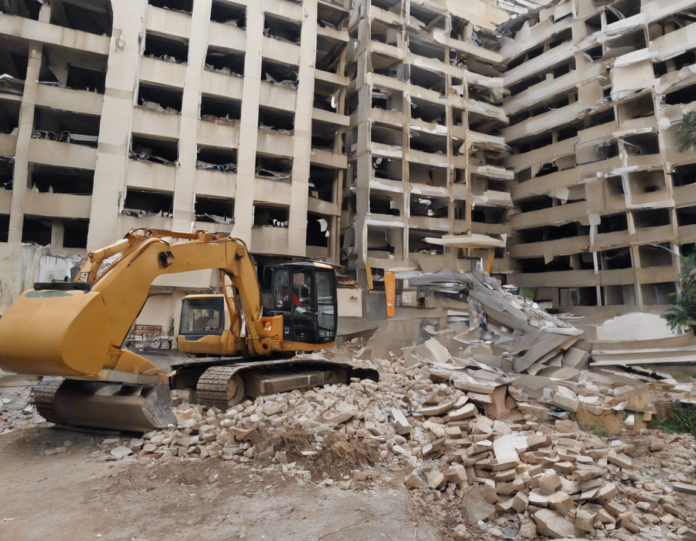The Raheja Mindspace Building demolition is a significant event that marks the end of an era in architectural history. This iconic building, situated in the bustling city of Hyderabad, India, has been a landmark for many years before its recent demolition. Let’s delve into the history, significance, and aftermath of this event.
History of Raheja Mindspace Building
The Raheja Mindspace Building was constructed in the early 2000s as part of the Mindspace IT Park development projects undertaken by the K Raheja Corp. The building was designed to cater to the growing demand for office spaces in the IT sector, which was booming in India at the time. Its modern design and state-of-the-art facilities made it a sought-after location for several multinational companies looking to establish their presence in Hyderabad.
Significance of the Building
The Raheja Mindspace Building was not just a structure but a symbol of the city’s rapid development and technological advancement. It stood as a testament to Hyderabad’s growing prominence as a hub for the IT industry, attracting business owners, entrepreneurs, and investors from around the world. The building’s architectural design and strategic location contributed to its popularity among tenants and visitors alike.
Reasons for Demolition
Despite its historical significance and architectural beauty, the Raheja Mindspace Building faced several challenges that eventually led to its demolition. Over the years, the building had started showing signs of wear and tear, requiring extensive maintenance and renovation work. Additionally, changes in building regulations and safety standards made it difficult for the structure to comply with the new norms, posing risks to its occupants.
Process of Demolition
The demolition of the Raheja Mindspace Building was a meticulously planned operation that involved experts in the field of controlled demolitions. The process began with the removal of hazardous materials and salvageable items from the building, followed by the strategic placement of explosives at key points to ensure a safe and efficient collapse. On the day of the demolition, spectators gathered to witness the controlled implosion, which brought down the building in a matter of seconds.
Impact on the Community
The demolition of the Raheja Mindspace Building has left a void in the city’s skyline and the hearts of those who admired its architectural grandeur. While some mourn the loss of a beloved landmark, others see it as an opportunity for new beginnings and fresh developments in the area. The event has sparked discussions about preservation, urban planning, and the importance of sustainable architecture in modern cities.
Lessons Learned
The demolition of the Raheja Mindspace Building serves as a reminder of the transient nature of structures in our ever-evolving cities. It highlights the importance of regular maintenance, compliance with safety standards, and adaptability to changing regulations in the construction industry. The event also underscores the need for thoughtful urban planning and sustainable design practices to ensure the longevity and resilience of future buildings.
Frequently Asked Questions (FAQs)
1. Why was the Raheja Mindspace Building demolished?
The building faced structural challenges and safety concerns that made it unsustainable for occupancy, leading to the decision to demolish it.
2. How long did the demolition process take?
The demolition of the Raheja Mindspace Building was completed within a few seconds through a controlled implosion technique.
3. What will replace the Raheja Mindspace Building?
There are plans to develop a new structure or complex in place of the demolished building, although specific details have not been disclosed yet.
4. Was the demolition of the building planned in advance?
Yes, the demolition process was meticulously planned and executed by experts in controlled demolitions to ensure safety and efficiency.
5. What impact did the demolition have on the environment?
Efforts were made to minimize the environmental impact of the demolition, such as proper disposal of debris and recycling of materials where possible.
In conclusion, the demolition of the Raheja Mindspace Building marks the end of an era but also paves the way for new possibilities and developments in Hyderabad. While the loss of a familiar landmark may evoke nostalgia, it also signals progress and innovation in the city’s architectural landscape. It serves as a reminder of the importance of adaptability, sustainability, and forward-thinking in urban planning and construction practices.






